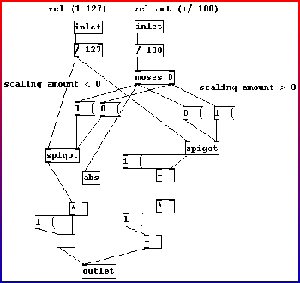http://digitalmedia.oreilly.com/2005/04/27/pd.html
… un artículo para ir tomando «confianzas» con PD …
Make Your Own Music Software with Pure Data
by Jim Aikin
You don’t need a degree in computer programming to use Pd, but calling it point-and-click would be wildly optimistic. Some patience and the ability to think logically will be essential–patience both to wade through some fairly dense documentation, and logic to figure out why your Pd patch isn’t doing what you expected (which it almost never will until it has been thoroughly tested and debugged).
Given that so many wonderful music software tools are available with the wave of a credit card, why would you want to roll your own? For one thing, you may want to do esoteric things that no commercial software will do. With the aid of a program like Pd, you can generate and process complex streams of MIDI and audio data for a live performance, or build your own software-based synthesizer and effects. […]
In this introductory tutorial, I’ll tell you how to get Pd and provide a few insights into what it’s like to work with it. Trying to explain all of the details of the program would take a prohibitive amount of space, and reading a full explanation without actually installing Pd would put almost anyone to sleep. There’s no substitute for learning by doing. Close to 100 tutorial examples (actual working patches) are included with the Pd distribution, and the best way to learn Pd is to go through these files all one at a time. After a while, you’ll find yourself tinkering with a patch. Save the results under a new filename, and congratulate yourself: you’re a Pd programmer. […]





Leave a Reply
Lo siento, debes estar conectado para publicar un comentario.